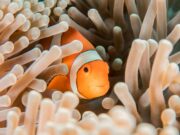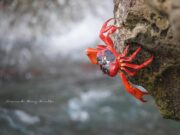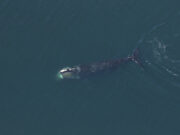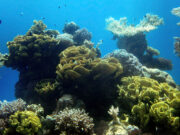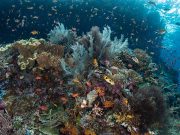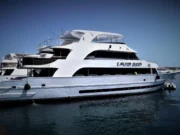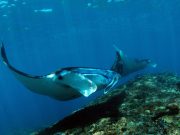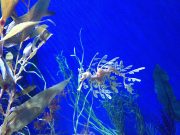Hermit crabs scuttle about the sea-floor using someone else’s shell for a home. They always use empty shells and never kill the original occupant.
When the crab becomes to large for its shell, it looks for another. When it finds a likely looking one it will try it on. If the shell doesn’t fit, or is too heavy, the crab returns to its old shell and continues it search.
Where there is a large population of hermit crabs and a shortage of shells, the crab will accept a sub-standard home: maybe a cracked or uncomfortable shell. But in good conditions it will be very particular about the new shell it chooses. Two hermit crabs will fight for the possession of an empty shell, or even a shell inhabited by one of the combatants.
Some of the Dardanas species of Hermit crab stick sea anemones on their shells. This camouflages the crab and the stinging cells of the anemone protects the crab from predators such as octopus.
The anemone also benefits from the arrangement. It becomes effortlessly mobile and shares the crab’s meals. However, if the crab is starving and can’t find anything to eat, it will eat the anemones, either from its own back or from the backs of other crabs.
Both partners are thought to participate in the transfer of the anemone to the shell. When the crabs change shells, they take their anemones with them.
Dardanas species are nocturnal with dark-adapted eyes. Look out for them on night-dives in the Indian and Pacific oceans, including in the Red Sea.
Further Reading
M. Imafuku , T. Yamamoto & M. Ohta. Predation on symbiont sea anemones by their host hermit crab Dardanus pedunculatus. Journal Marine and Freshwater Behaviour and Physiology, Volume 33, 2000 – Issue 4. 10 Jan 2000.

